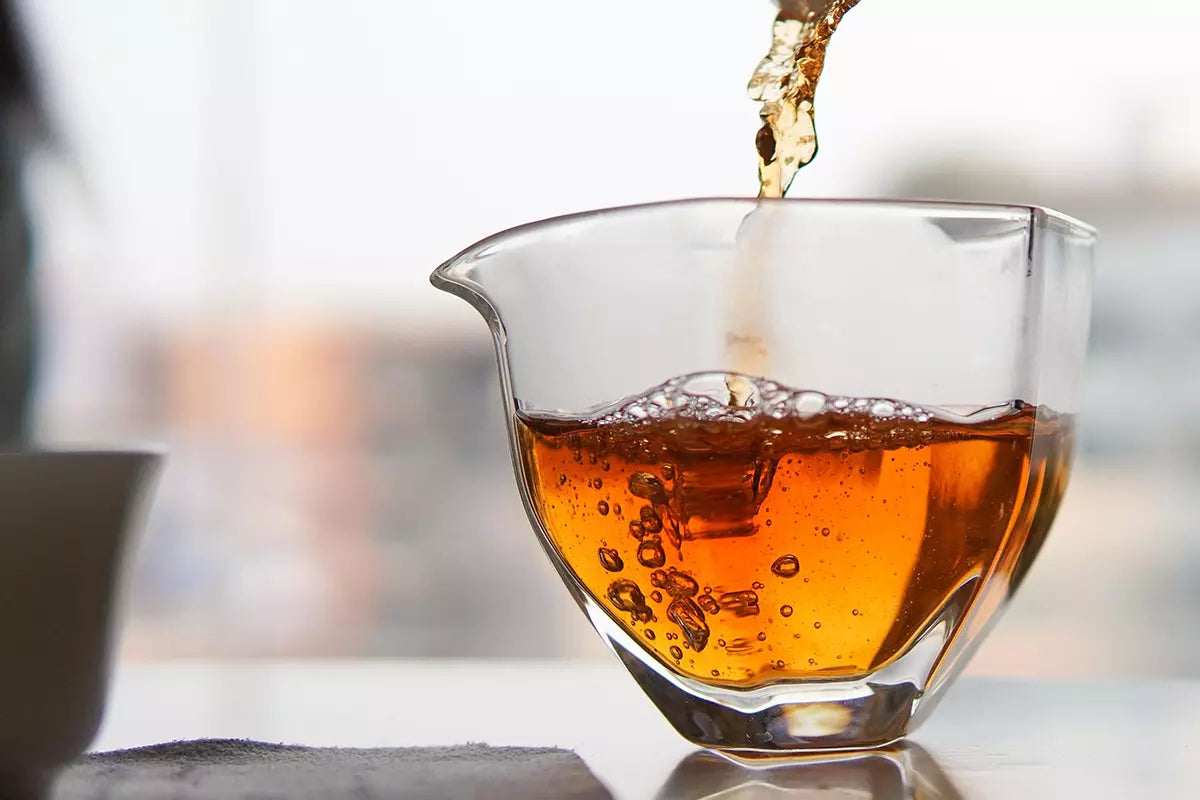As the weather gradually turns cooler in the autumn season, it can have various effects on the human body. Firstly, autumn is a season prone to illness, with weakened bodily functions making it more susceptible to colds and external pathogens. Secondly, the dry weather of autumn necessitates increased hydration. Furthermore, people tend to have a better appetite in the fall, which can lead to overeating and increased fat accumulation.
There are certain types of tea that are well-suited for autumn consumption, as they can help regulate some of the changes in the body's functions during this season. Let's explore some teas that are suitable for autumn.
Which Teas Are Suitable for Autumn?
1.Oolong Tea

Loose Leaf Oolong tea is a partially fermented tea with a balanced nature, not too cold or too hot. It combines the fragrance of green tea with natural floral notes and the rich taste of black tea. Oolong tea has the ability to quench thirst, clear internal heat, and moisten the throat and skin, making it particularly suitable for consumption in the dry autumn season. Some of the polyphenols in oolong tea transform into tea pigments, giving it antioxidant and oil-reducing properties. Oolong tea is also highly aromatic and has a refreshing and invigorating effect.
2.Black Tea

Loose Leaf Black tea is a highly fermented tea with warm properties, making it very suitable for consumption in the autumn. During cold weather, a steaming cup of black tea can quickly warm the body and help fend off the chill. Additionally, black tea promotes blood circulation, ensuring that all parts of the body receive adequate blood supply, reducing the likelihood of cold hands and feet.
Autumn is a season with a high incidence of colds due to the sudden drop in temperature and reduced immune defenses. Black tea is rich in antioxidants like tea polyphenols, vitamin C, and amino acids, which can enhance the immune system's function and help the body resist colds and other common autumn illnesses.
3.White Tea

White tea is minimally fermented and undergoes natural withering and drying. It has a gentle nature, making it suitable for consumption throughout the year. Drinking white tea in the autumn helps reduce heat and dryness. Since white tea is not subjected to high-temperature processing, it retains a significant amount of active enzymes. White tea can replenish the body's moisture and nourish while reducing dryness.
4.Dark Tea

With the onset of cooler weather in autumn, people tend to have better appetites, leading to increased food consumption. Dark tea contains beneficial microorganisms and probiotics that effectively regulate the gastrointestinal tract, promote digestion, and help maintain digestive health, making it a great choice for those who enjoy rich and hearty meals. Dark tea, being post-fermented, has warm properties and is generally suitable for a wide range of individuals.
Like the other types of tea mentioned earlier, loose leaf tea is the best choice for dark tea. I recommend that you seek reliable sources for purchasing loose leaf tea to ensure that you obtain the best loose leaf tea, as this is essential for achieving better health benefits.
5.Chrysanthemum Tea

Autumn weather tends to be dry, the summer heat lingers, and there can be significant temperature differences between day and night. This can lead to symptoms such as excessive internal heat, headaches, and wind-heat colds. Drinking chrysanthemum tea can help clear heat, moisten dryness, and prevent internal heat. When brewing chrysanthemum tea, you can add a suitable amount of goji berries, which can help disperse wind, clear heat, detoxify, and improve vision. Combining chrysanthemum tea with pu-erh tea can help disperse wind, clear heat, and benefit the liver and eyes. However, chrysanthemum tea has a cooling nature, so it should be used with caution by those with qi deficiency and cold stomach.
6.Osmanthus Tea

Late August is the season when osmanthus flowers are in full bloom. Osmanthus is warm in nature and can warm the stomach, improve a poor appetite, and aid digestion. Osmanthus can be used in cooking, pastries, or in tea. Osmanthus tea contains various trace elements that can alleviate fatigue, soothe coughs, and moisten the lungs. It can also be brewed with black tea for a delightful combination.
Try Tea Samplers to Find Your Ideal Tea

Black tea and oolong tea are well-known tea varieties with a rich history and numerous famous varieties. How can you select and purchase the black tea or oolong tea that you'll enjoy? It's not advisable to purchase the full-sized packaging when you're uncertain whether you'll like a particular tea. Full-sized tea packages typically contain 50g or even 100g of tea, making it easy to end up with unused tea if you don't like the taste. Therefore, I recommend trying tea samplers to discover the teas that suit your taste. iTeaworld offers premium Black Tea Sampler and Oolong Tea Sampler, each containing several classic loose-leaf Chinese black teas and loose-leaf oolong teas with different processing methods, fermentation levels, and flavor profiles, making it easier for you to find the tea that suits you.
Compared to black tea and oolong tea, white tea and dark tea are less mainstream and can be confusing for those who aren't well-versed in tea. In the future, iTeaworld will also introduce selections of these tea categories, including classic tea sampler that offer excellent value for money, allowing you to discover the teas that suit you with limited time and budget.
In this article, we introduced several teas suitable for autumn, and provided recommendations on selecting and purchasing tea. Tea preferences are subjective, and the choice of which tea to drink can be based on personal taste and individual health considerations.











































































